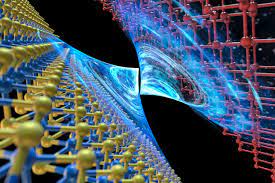Electronic devices such as computers and smartphones become more thin and smaller. One of the challenges of thinner and smaller devices in the future reduces the size of internal components and equipment and MIT has announced a new advance that can allow 2D transistors for smaller microchip components. The project researchers believe that this step forward could help pursue the progress made in the chip market, allowing Moore’s Law to continue.
Moore’s law predicts that the number of transistors packed in a microchip can double every two years, but physical limits are beginning to slow down this progression. MIT researchers explore the use of atomically thin materials instead of silicon to make transistors. A major challenge to use 2D materials is that the connection to conventional electronic components has been difficult.
The MIT researchers, the University of California in Berkeley and the Taiwan Semiconductor manufacturing company, as well as others, have found a way to make the required electrical connections. The breakthrough could help bring the potential of 2D materials to market and improve the miniaturization of the components, extending the Moore law for the near future.
The researchers resolved one of the biggest problems of miniature semiconductor devices, which is the contact strength between a metal electrode and a mono-conductive semiconductor material. A researcher stated that the solution to the problem was relatively simple and required a semi-metal element called Bismuth to take the place of ordinary metals to connect with the monolayer material.
Ultrains monolayer materials, such as molybdenum disulfide, have been considered as an ability to circumvent the miniaturization limits encountered by silicon-based transistor technology. Create a highly conductive interface between materials and metal conductors to connect them was the challenge. The rapid rhythm of the transistor’s miniaturization settled around the year 2000, but a new development broke out this roadblock in 2007. However, researchers think we are at the edge of another bottleneck, but This new step forward could help to continue.


![How to solve [pii_email_84ac4eb1f4c347225fff] error?](https://businessmug.co.uk/wp-content/uploads/2021/09/pii_email_7cef1d1c98a5f83e63fb.jpg.webp)


![How to fix outlook [pii_email_2c5d108980d117c8ca52] error](https://businessmug.co.uk/wp-content/uploads/2021/09/ms-outlook-error-1.jpg)